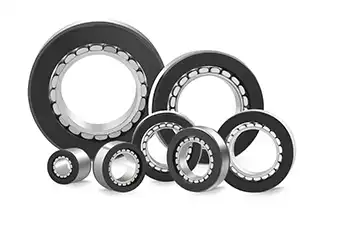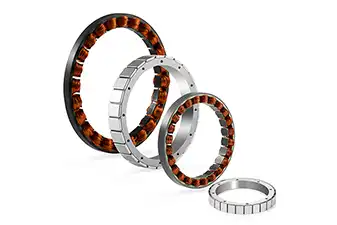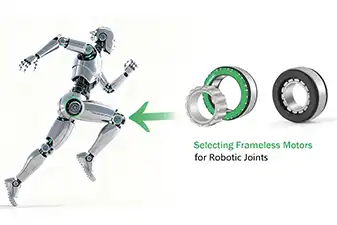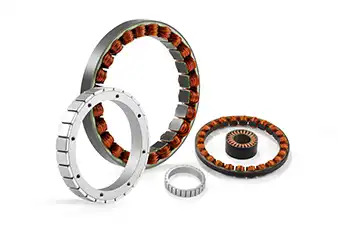It can be quite tricky to choose the right motor for your application. Brushed motors wear out quickly due to friction, while the brushless motor can be hard to control over time. The key difference?
Brushed motors use magnets in the stator and windings in the rotor. On the other hand, brushless motors have the windings, and the rotor contains the permanent magnets. This design ensures better efficiency and less wear. Learn more about the differences between brushless motors and brushed motors.
Brushless Vs Brushed Motors: A Quick Comparison
| Factor | Brushed Motor | Brushless Motor |
| Efficiency | Medium | High |
| Electrical Noise | Noisy | Quiet |
| Acoustic Noise & Torque Ripple | Poor | Medium |
| Life expectancy | 3000 hours | >10,000 hours |
| Rotor balancing | Rotor with copper windings | Rotor with solid magnet segments |
| Maximum speeds | ~5000 rpm | >10,000 rpm |
| Power density | Lowest | Highest |
| Cost | Low | High |
What are Brushed DC Motors?
A brushed motor is a special type of motor that is designed to convert electrical energy into mechanical energy by generating a magnetic field from direct current. The cmplete process works on brushes and a commutator that creates a magnetic field and drives the rotor. The brushes are connected to the DC power source which helps to slide the commuter when voltage is applied.
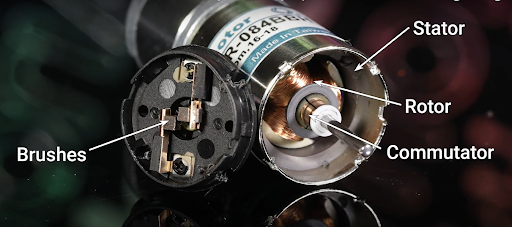
Source: DigiKey
Inside the motor, there are permanent magnets, known as the stator. The stator is stationary, remaining around the rotor and driving the armature's rotation. The rotor or armature contains one or more electric windings that help to spin the motor at 180 degrees initially when external electricity flows through it.
To enable continuous 360-degree rotation, carbon brushes flip the magnetic poles as the rotor turns. This is the most simple type of DC motor that is often driven by batteries.
How Does Brushed Motor Work?
A brushed motor works by using electricity to create motion. The rotor features coils that are connected to the commutator. The commutator is in contact with brushes. These brushes stay in contact with the rotor as it spins, flipping the magnetic field and allowing it to spin a full 360 degrees.
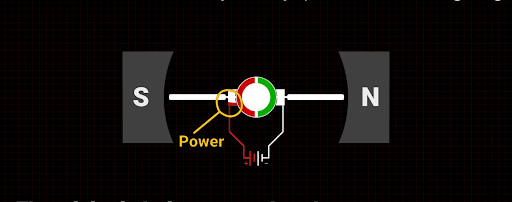
Source: DigiKey
Here is how it works: The motor also has permanent magnets in the stator, which creates a strong magnetic field. As the motor moves, it reaches a point where the brushes lose contact with the commutator and stop the current flow temporarily.
However, the rotor keeps moving until the brushes and commutator reconnect. When they make contact again, electricity flows into a different coil, and the rotor continues spinning.
Advantages of Using Brushed Motors
These are the notable advantages of using the brushed DC motor in different applications:
1. Cost-Effectiveness
Brushed DC motors have a simpler design and manufacturing process. The best part is that this helps to lower operational and maintenance costs, which saves you money. This makes them a budget-friendly option for many applications, especially when low-cost solutions are needed.
2. Simple And Reliable To Use
Brushed DC motors are easy to use due to their simplicity. They have just four main components: the stator, rotor, commutator, and brushes. That makes them reliable and perfect for applications where basic functionality and low cost are key priorities.
3. Ease of Control
Brushed DC motors don’t require complex electronics and are easy to control. You just need to adjust the voltage or know the basic switch function to control their speed and direction. You can easily integrate and operate the motor in any application.
4. Easy To Miniaturize
Brushed DC motors can be configured easily into any device. They typically have fewer parts and a simple design. You can easily miniaturize them for use in small devices like toys, tools, and gadgets without losing performance.
5. Excellent Traction
Brushed DC motors offer great traction, especially when high torque is needed at low speeds. This makes it perfect to use in applications like electric vehicles or machinery where you need to ensure strong pulling power to move heavy loads efficiently.
Disadvantages of Using Brushed Motors
Beyond some benefits, these are some factors you may need to consider for using the brushed motor in your project:
1. Mechanical Wear
One downside of brushed motors is the mechanical wear of the brushes and commutator. The carbon brushes wear out over time and need to be replaced regularly. That’s why they are designed to be replaced easily to ensure easy maintenance.
2. Electrical Noise
Brushed DC motors can create electrical noise or electromagnetic interference (EMI). As the brushes and commutator work as switches, they create sound. It sometimes affects nearby applications.
3. High Rotor Inertia
Brushed DC motors have high rotor inertia, so their rotor resists quick changes in speed. Over time, it makes them slower to accelerate or decelerate. However, it ensures up to five times more torque than its rated value without stalling and offers strong power.
What are Brushless Motors?
A Brushless DC motor is a type of motor that is powered by a direct current voltage supply. However, it does not use brushes for commutators like the conventional DC motors. Instead of it, the brushless motors commutated electrically.
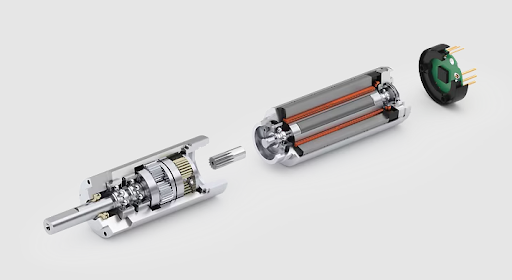
Source: https://www.maxongroup.com/en/drives-and-systems/brushless-dc-motors
The rotor is a permanent magnet in these DC motors. The coils stay fixed on the stator instead of rotating. So there is no need for stator brushes or commuters as the stator does not move.
Here, the surrounding stationary coils generate magnetic fields. The rotation is achieved by changing the direction of this magnetic field. You can adjust the strength and direction of the current in these coils. Thus you can control the movement of the rotor.
How Does Brushless Motor Work?
The core principle of a brushless motor to work is the interaction between
▪︎ The magnetic field generated by the coils of stators and
▪︎ The magnetic field of the permanent magnets of rotors.
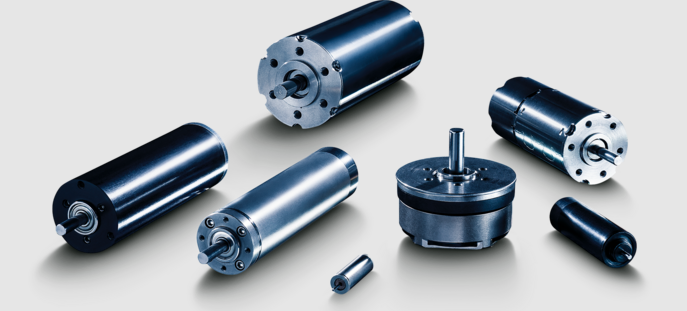
Source: https://www.faulhaber.com/en/products/brushless-dc-motors/
When the current flows through the stator windings, it creates magnetic fields. This magnetic field attracts the magnets on the rotor or repels them.
The electric controller of the brushless motors switches the current in the stator windings. This switching changes the direction of the magnetic fields around the stator. As a result, the rotor turns to align the magnetic field generated by the stator.
The rotation of the brushless motors is controlled by sequence and the timing of the electrical current sent to the stator coils. The electric controller controls the speed and direction of the motor by adjusting which coils will be powered and when. It makes the brushless DC motors more efficient than the brushed motor.
To have a better understanding of the facts, you can check out this effective video:
What is a BRUSHLESS MOTOR and how it works - Torque - Hall effect - 3D animation
Further Reading: How To Mount and Install Frameless Brushless Motor? The Complete Beginners Guide
Advantages of Using Brushless Motors
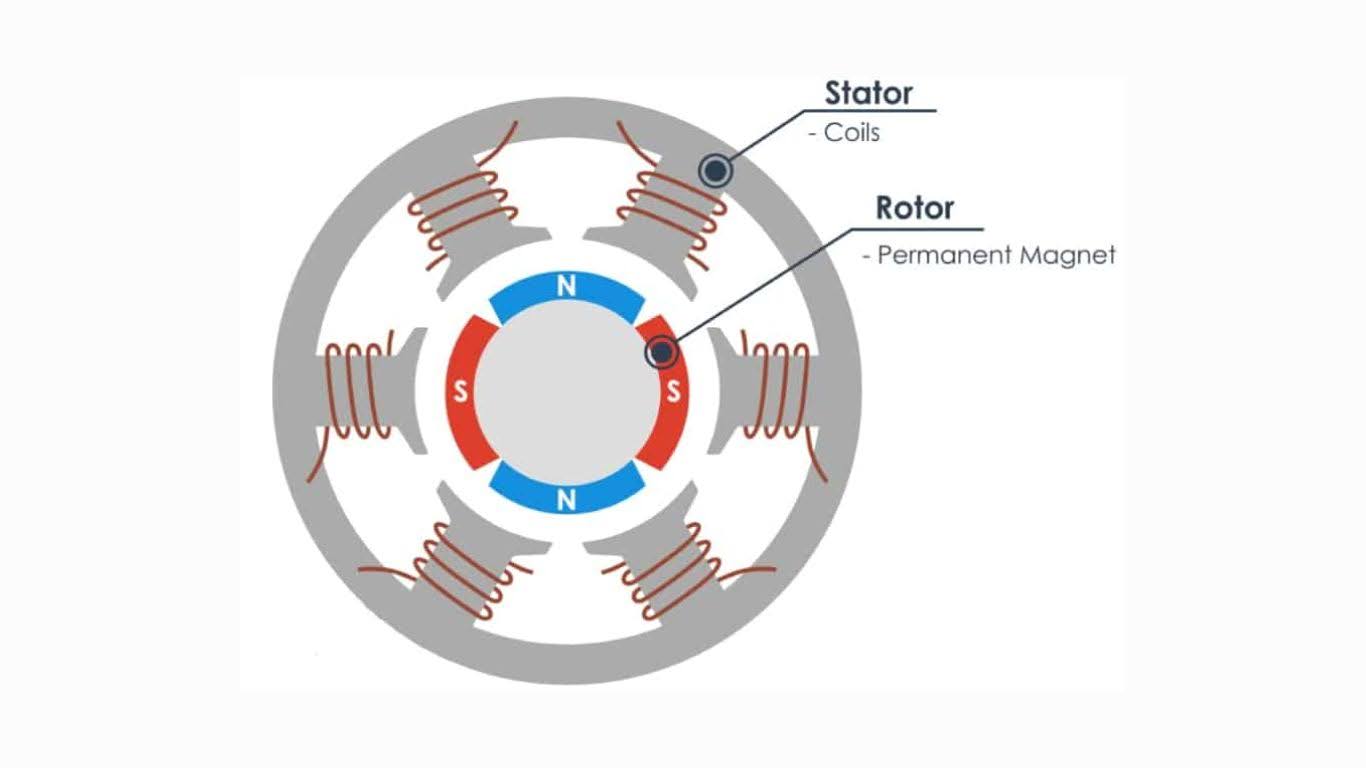
Source: how2electronics.com
Let’s check out some notable advantages of the brushless motors below.
1. Enhanced Energy Efficiency
Brushless motors can precisely manage the current to the motor with the electric control and sensors. This precise control enhances the overall performance and efficiency.
The brushless DC motors are 85% to 90% more efficient than the brushed motors whose efficiency rate is around 80%. This higher efficiency comes from the reduction of sound and heat which minimizes the loss of power.
2. Lower Maintenance Needs
The brushed DC motors have carbon brushes which you may need to replace more often. However as the brushless DC motors do not have one, it reduces the maintenance requirements. This reduction in maintenance saves time and reduces costs over the operational life of the brushless motors.
3. Compact Design with High Power
The brushless motor comes in various sizes. From the smallest to the largest, you can get according to your project needs. For instance, the U25 Series Smallest Frameless Motors is a small motor series whose outer diameter is only 25mm.

Brushless motors are powerful despite their small sizes. This compact power of the motor is especially beneficial where the space is limited but high performance is needed. For instance, drones, electric vehicles, or small appliances. You can even with the largest motors U200 Series BLDC Frameless Motors with an outer diameter is about 200 mm.
4. Wide Range of Applications
Brushless motors are light in weight. However, it can produce substantial torque output that is almost similar to the larger induction motors. Moreover, the brushless motors offer performance, efficiency, and longevity all at a time.
So you can use them in various applications. For instance, hand-held power tools, computer peripherals like drivers or disks, and electric vehicles.
5. Flexible Customization Options
Due to the high design flexibility of the brushless motors, they can be used in applications with different voltages, load requirements, and rotation speeds. The motors can run with or without sensors and have more poles than the brushed motors. There are many off-the-shelf options for the brushless motors that can suit the different standard specifications.
Disadvantages of Using Brushless Motors
Brushless motors are more efficient and powerful. However, the brushless motors have some disadvantages you should know to make informed decisions.
1. High cost
The brushless DC motor requires high-performance material. For instance, high-temperature wear-resistant materials, rare metal permanent magnets, and so on increase the cost. That’s why the brushless motors are generally more expensive.
2. Limited Range
The brushless motors may have a limited range than the brushed motors. The applications where high speed is important, the brushless motors may not produce sufficient torque. This makes them unsuitable for some applications.
3. Requires cooling
The brushless motors may require cooling for the high power operation. The absence of heat dissipation in the brushless motors can affect its performance in different applications.
What Are The Differences Between Brushed And Brushless Motors?
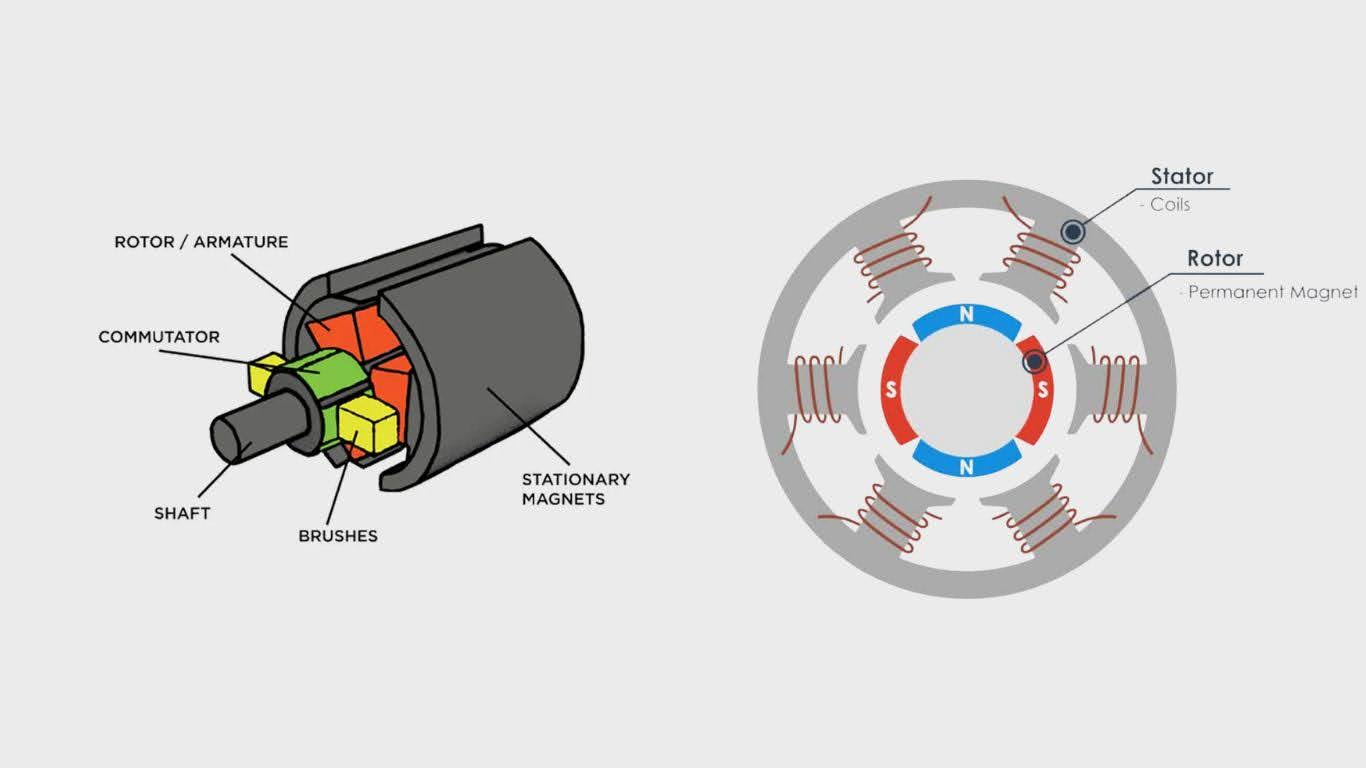
These are some common factors that will influence the efficiency of the brushed and brushless motor and help you choose the right motor for your application.
1. Operating Speed
Brushed motors work best at speeds between 1,000 and 10,000 RPM. At higher speeds, the brushes can lose contact with the commutator, reducing performance. In contrast, brushless motors can operate at much higher speeds.
As they don’t rely on brushes, there is no chance of reduced performance due to higher speeds. This makes brushless motors the top choice for high-speed applications. However, the brushed DC motors are still ideal to use in various applications where you need medium speed.
The below figure shows a U130 Series Frameless Servo Motors, which ensures high performance in all applications.
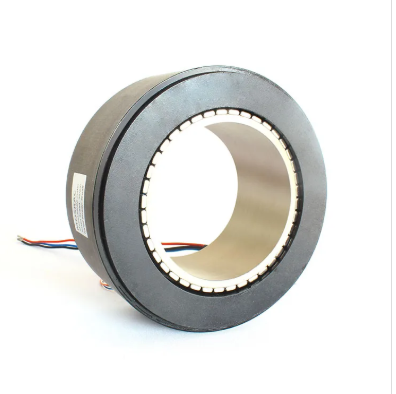
2. Lifespan
Brushless motors generally last much longer than brushed motors. Over time, brushes and the commutator in brushed motors wear out, which limits their lifespan to around 2,000 to 5,000 hours.
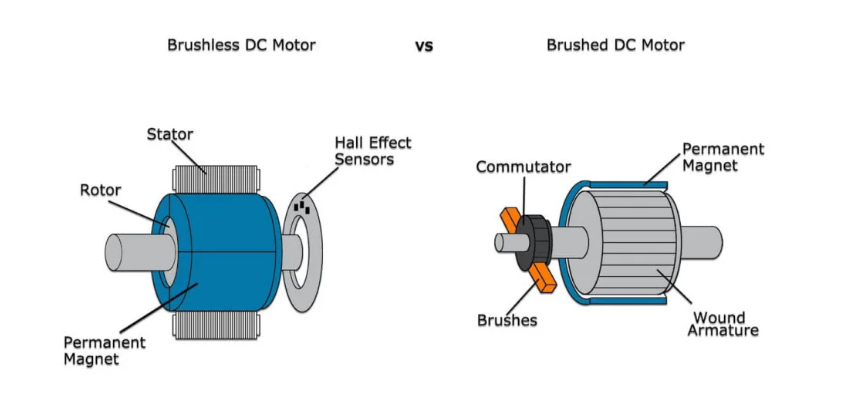
Source: https://greensky-power.com/brushless-dc-motors-and-brushed-dc-motors/
On the contrary, brushless motors often exceed 10,000 runtime hours. As they don’t have brushes, their lifespan mainly depends on the bearings and environmental conditions. That’s why it is often a better choice to use for projects where it is needed to ensure long-lasting performance with minimal maintenance.
3. Cost
One advantage of the brushed motor over the brushless motor is its cost. The manufacturing steps of the brushed motor are straightforward, and their technology is well established. So generally their cost is less.
However, brushless motors require advanced electronics that increase their costs. As brushless motors tend to have a longer lifespan and low maintenance requirements, they can be cost-effective in this sense. Moreover, brushed motors are becoming popular, especially in the automotive industry, and technology is improving. So, their cost seems to be coming down.
4. Power Density
Brushless motors typically have a higher power density than brushed motors. Brushed motors work on the mechanical brushes that contact the commutator. It creates friction, which ultimately causes power loss.
On the contrary, brushless motors use advanced electronic switches, like transistors, to control the flow of current to the motor’s windings. For this unique design, the motor doesn’t need physical contact, which reduces friction and unwanted heat. Still, with the motor overloaded, it demands more power. Sometimes, it generates excessive heat which can hamper the magnets of the rotor.
Get a detailed overview from the below video:
What Happens when you Excessively Load a Brushless Motor
5. Torque Stability
Brushless motors tend to be yet more powerful than brushed motors. They provide higher torque and maintain consistent rotational power throughout their operation.
Such important brushless motor example is the U38 Series Frameless Torque Motor, which ensures stable torque and precise speed control. The rated torque options range from 0.025Nm to 0.075Nm.
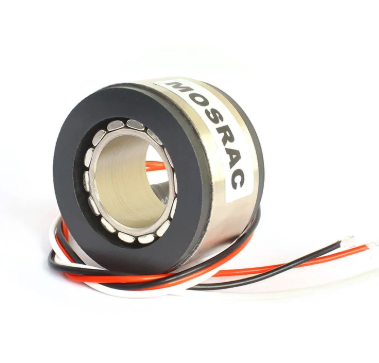
This makes it a perfect choice to use for various tasks. They have less torque ripple which ensures less vibration and noise during the operation.
On the other hand, brushed motors can only achieve maximum torque at specific points during their rotation. These motors have lower torque capabilities and higher torque ripple, which in some cases causes vibration and noise due to the applications.
6. Rotor Balancing
Brushed motors need to adjust weights and the parts of the rotor to balance the complete setup. This is important to avoid shaking or vibrating when it moves. To do this, manufacturers sometimes add small weights, like washers, or bend certain parts of the rotor. This ensures the rotor’s center is perfectly lined up with the axis it spins on without any vibrations.
You need to check the rotor of the brushless motor carefully for any problems, like cracks or uneven parts. If there is any problem, you need to add or remove small weights, like washers, to make the rotor spin evenly.
7. Electrical Noise
Brushed motors are often noisier than brushless motors. The brushes touch the commutator as they spin, which creates friction and makes noise. As the brushes wear down over time, the noise gets louder. Also, when the motor starts up, it might be sparking, which adds additional noise to the process.
On the other hand, brushless motors are generally quieter because there are no brushes that rub against the commutator. Also, when they spin faster, they can be louder due to air resistance and vibrations. However, they are usually quieter in various applications like disk drives or medical machines.
8. Thermal Management
Brushed motors produce more heat than brushless motors. The brushes and commutator in a brushed motor mainly create heat which generates heat as the motor runs. This friction then combines with the energy losses, which causes the motor to get too hot, especially during long periods of use.
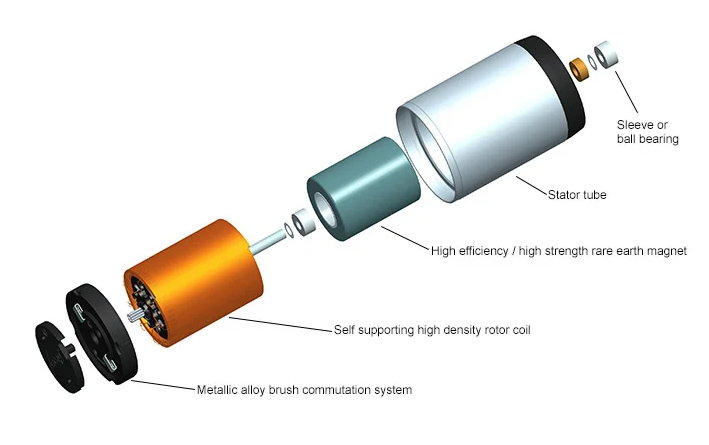
Source: https://www.portescap.com/en/products/brush-dc-motors/brushed-dc-motor-basics
Compared to this, brushless motors are energy efficient. As they don’t feature brushes or a commutator, you won’t get any friction and energy loss as heat. This helps the brushless motor stay cooler, even when running at high speeds or for longer times.
Their increased efficiency is around 85 to 90 percent, which makes them a better choice for applications where you have doubts about high heat generation while operating.
Further Reading: Frameless Motor VS Brushless Motor: Which is Right for You?
Brushless Vs Brushed Motors: Which One Is Perfect For Your Project?
What you should choose between brushed and brushless motors mainly depends on your project’s needs. For instance, if you need a cost-effective solution in simple designs, a brushed motor is a good choice.
You can easily use it for your household appliances, power tools, or even car window motors. These types of motors are easier to find and affordable but need to consider maintenance over time.
On the other hand, if you need higher efficiency, longer lifespan, and quieter operation, a brushless motor is a better option.
They are great for applications like model aircraft, electric vehicles, robotics, and washing machines. These types of motors ensure long-lasting operation, produce less noise, and require less maintenance.
You will find frameless brushless motors in various product lines including U60 Series Frameless BLDC Motor, U76 Series Brushless DC Frameless Motors, U94 Series Frameless Inrunner Torque Motor, U68 Series Frameless Rotary Motors.
In Closing
If you need a motor that’s simple and cheap, a brushed motor is a good choice. But, if your project needs high performance, and precision, or runs at high speeds, a brushless motor is better.
So select the best motor based on your specific project requirements. All in all, you need to ensure that you choose motors from well-known manufacturers to ensure reliability. For instance, Mosrac can be your trusted partner in providing durable and efficient motors. Contact us to select top-quality motors and find the perfect match for your project.
FAQs
1. What type of motor is better for beginners?
As a beginner, we recommend going with the brushed motor. It’s affordable and simple to design to assist operations with it. They don’t require complex electronics, so you can easily integrate them with your project.
2. Can I control the speed of both brushed and brushless motors?
Yes, you can control the speed of both brushed and brushless motors. For brushed motors, you adjust the voltage. Besides, you use a controller to manage the speed of your brushless motor.
3. Can I use a brushless motor for small projects?
Yes, you can use a brushless motor for small projects. They are efficient and durable, which makes them great for tasks where you need to ensure high performance even in smaller spaces. For example: drones, small robots, and model airplanes.
4. Can I replace a brushed motor with a brushless motor?
Yes, you can replace a brushed motor with a brushless motor. However, you'll need extra parts like an electronic speed controller (ESC) and may need to adjust the mounting or wiring.
5. Can brushless motors overheat?
Yes, brushless motors can overheat. If the voltage is more than 10% higher or more than 5% lower than the motor's rated voltage, it can cause overheating.
Looking for a custom solution?
Tell us about your requirements and our application engineers will help you find the right solution today!
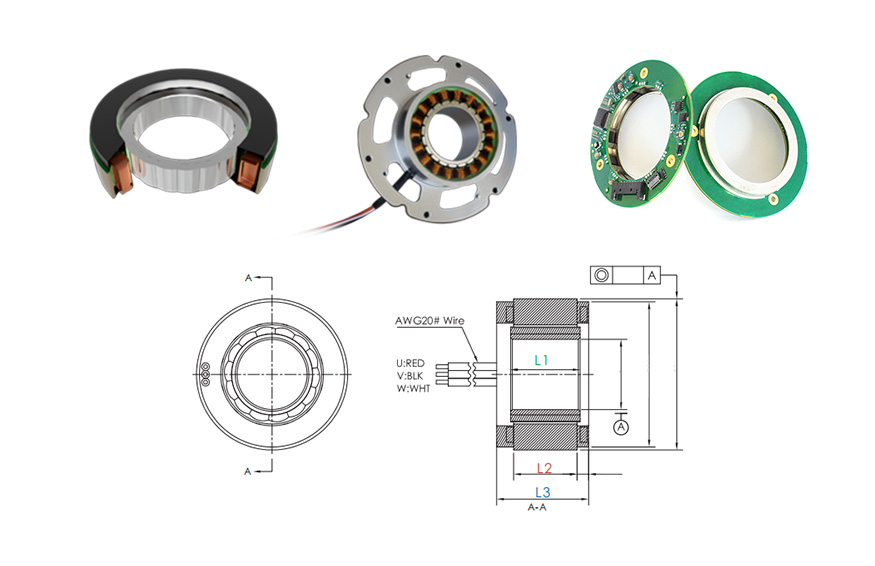
Any questions or comments about Frameless Motors, Direct Drive Rotary Motors, and Encoders? Contact us at sales12@mosrac.com for sales, technical inquiries, or order samples online today!














